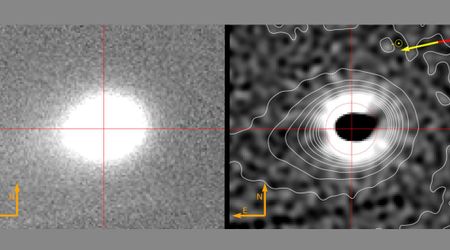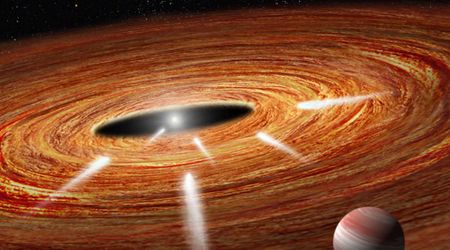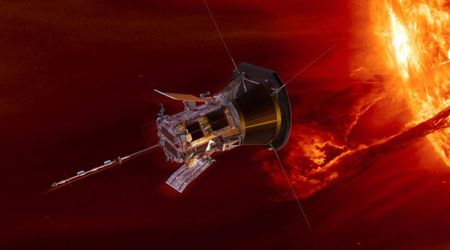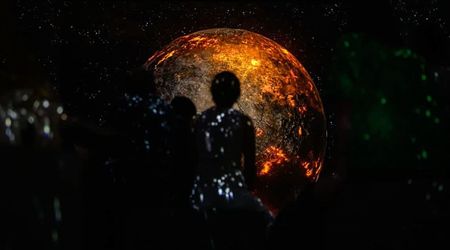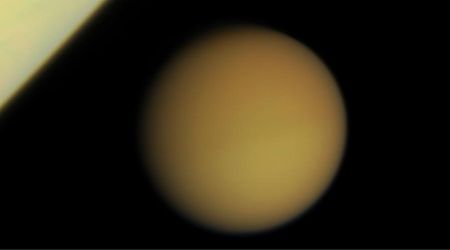planetarium uk

A (very) brief history of planetariums
Planetariums were originally created at the beginning of the 20th century in order to reconstruct and map the night sky as accurately as possible. Nowadays, theses “star dome” have been technologically improved to offer immersive experiences for space lovers all around the world. The first ever planetarium was built by famous optical form Zeiss following a request from Max Wolf, astronomer and director of the Heidelberg Observatory at the time. Forward to today, modern planetariums are technologically complex system worth several hundreds of thousands of pounds capable of displaying images in 4K on domes of 10 meters deep and more.
There are about 40 planetariums in the United Kingdom, and we have gathered some information about 8 of our favorite ones below.
Select the nearest location to you:
Liverpool
London
Winchester
Leicester
Birmingham
Armagh
Bristol
Edinburgh

Liverpool Planetarium
World Museum - William Brown Street Liverpool, L3 8EN
Located inside the World Museum in Liverpool, this planetarium is a great way to spend an afternoon for anyone interested in space exploration and astronomy. The entrance to the museum is free however you’ll have to book your planetarium show ticket at the reception desk. Prices are about £3 for adults and £2 for children, people with the museum membership cards can go for free. There are shows every 30-45 mins (approximately) starting from 2 pm during the week and 10.45 am during the weekend.
They have a variety of digital show available at all time: whether you are keen to see the planets up close or discover how rockets work, these immersive experience will have you and your family mesmerised!

London Planetarium
Peter Harrison Planetarium - Royal Observatory, Greenwich.
This planetarium has been a part of the National Maritime Museum since 2007 and can seat up to 120 people per show. They have a wide variety of shows focusing on the solar system, with an emphasis on the nearby planets and moons (as of October 2019). The planetarium shows are presented live by real astronomer, adding their expert commentary to the visual experience and they last up to 30 mins.
Tickets cost £5 for children and £10 for adults, however, you can enjoy a discounted price if you order your tickets online on the website. We recommend this planetarium for anyone with a keen interest in astronomy in the London area.

Winchester Planetarium
Telegraph Way, Winchester SO21 1HZ
Based in the heart of Hampshire, Winchester’s planetarium was designed to offer an immersive experience inside the cosmos. They offer three types of showing to cater to everyone: Quiet Shows, Chatterbox Shows, and Relaxed Shows (ideal for people with sensory sensitivities). You can choose to either enjoy a viewing narrated by a live presenter or simply watch the pre-recorded digital animations projected on the massive dome.
Most shows last for about 25-30 minutes and can be booked at a price of £3.50 (on top of your museum entrance fee). This planetarium is highly recommended for children: many families who have reviewed the museum have said that they had a great experience. Could a 360 degree view of the universe help inspire future space explorers? Who knows!
Image source: whichmuseum.com
Facebook Twitter Phone Map-marked-alt Laptop Tripadvisor

Leicester Planetarium
National Space Centre - Exploration Dr, Leicester LE4 5NS
The Sir Patrick Moore Planetarium is the largest planetarium in the United Kingdom and is located at the National Space Centre in Leicester. Visiting this space museum is known to be a highly enjoyed activity by both parents and kids. The Digistar 3 dome cinema offers an amazing experience for anyone with a keen interest in astronomy. Currently, the planetarium has 3 shows: Astronaut, Tour of the Night Sky, and Night & Day (a show for toddlers aged 1-4).
The planetarium can seat up to 165 people per show and is equipped with a state-of-the-art digital projection system. Booking in advance is advised due to the popularity of the National Space Centre.
Image source: Pick Everard
Facebook Twitter Phone Map-marked-alt Laptop Tripadvisor

Birmingham Planetarium
Thinktank - Birmingham Science Museum Millennium Point, Birmingham B4 7XG
Thinktank is a science museum with a section dedicated to space which contains a highly praised planetarium. Thinktank opened in 2001 and is part of the Birmingham Museum Trust. The planetarium, or “star dome” is equipped with cutting edge 4K technology which allows for sharper images and immersive sound experience.
Tickets can be booked at the reception desk at a cost of £2.50 (added to your museum entrance fee). Kids can go for free if they are under the age of 3! The particularity of this planetarium is that it is not exclusively dedicated to space. Other science show about the human body or the ocean are also available, which is a good reason to revisit the star theatre in the future!
Image source: wikimedia commons
Facebook Twitter Phone Map-marked-alt Laptop Tripadvisor
Armagh Planetarium
College Hill, Armagh BT61 9DB, Northern Ireland
As one of the best places to learn about astronomy in Northern Ireland, the Armagh planetarium is also an observatory! They recently launched a brand new dome show called “Unseen Universe” which delves deeper in the realm of invisible light. Armagh Observatory and Planetarium is an important centre for astronomical research and education in Ireland. It’s 40 miles south of Belfast and definitely worth the trip. The only downside is that they only play one showing per day (at 2 pm, don’t miss it!). The observatory part of the site was inaugurated in 1790 by Archbishop Robinson and the planetarium finished construction in 1968!
Image source: wikimedia commons
Facebook Twitter Phone Map-marked-alt Laptop Tripadvisor

Bristol Planetarium
We The Curious (formerly At-Bristol)
We The Curious is an interactive science museum and home to the best planetarium in Bristol. If you live in the area, it is probably THE place to go for your next astronomy-filled adventure. The planetarium offers a fantastic variety of programs: the dome allows you to enjoy a simulated view of the universe on a state-of-the-art 360 video screen.
In addition to the planetarium showings, you may enjoy more than 250 fun exhibits created to spark curiosity with people of all ages! Their planetarium shows are a little more in-depth than usual and last an hour - but don’t worry, the live commentators does a great job to make sure that show is accessible to everyone, even to those completely new to astronomy!
Facebook Twitter Phone Map-marked-alt Laptop Tripadvisor

Edinburgh Planetarium
Dynamic Earth
Dynamic Earth’s 360° show dome offers an educational display that aims to educate children and adults on the vastness of our solar system, and the people contributing to its exploration. Following the recent 50th anniversary of the first moon landing, the planetarium currently play a show called “Capcom Go! The Apollo Story”. This is a great introduction on the space exploration for anyone with a keen interest for it in the Edinburgh area.
The full size star theatre uses the power high-end display technology to deliver an immersive, spectacular and emotional experience to audiences of all ages. Quite frequently… It's a beautiful, immersive, and educational way to enjoy the stars.
Image source: wikimedia commons
How does a planetarium work?
The concept of the planetarium is to create a visual representation of our solar system and the cosmos. Inside the planetarium’s dome, a projection system creates three-dimensional image of objects around you as they are projected onto a large oval screen. The planetarium is interactive entertainment that brings people closer to space: it uses high-resolution computer graphics and high-tech sound system for an immersive experience, yet not overwhelming. The projections are so real, you will feel you are truly there!

Credits: RSA Cosmos
Frequently Asked Questions
What is a planetarium?
A planetarium is round room containing up to hundreds of seats, like in a cinema, with a dome on top on which is projected a digital show on a 360-degree angle.
How long does a planetarium show last?
On average, a planetarium show usually last about half an hour. In certain cases, shows might last 45 to 60 mins. There are museum with a focus on improving children’s curiosity that may have shows designed for kids that last for 10 to 15 minutes.
What happens in a planetarium?
You can enjoy an immersive experience while listening to live commentary from astronomers. Planetarium shows are not just about space but also other scientific topic like animals, health, and even microscopic life.
How big is a planetarium?
It depends on where the planetarium is located and how old the system is. One of the biggest planetarium in the UK is in Birmingham and can seat up to 165 people per show.
What is the difference between an observatory and a planetarium?
A planetarium is a place to enjoy and learn about the cosmos that is open to everyone. An Observatory is a place where astronomers study the solar system, galaxies and the universe by using advanced telescopes and other state of the art tools.
Have you been to one of those planetarium? Let us know your experience in the comment section :)
Recommended Reading
The Best Home Planetarium Projector - Bring The Night Sky To Your home
Check out our overview of 5 home planetariums that are worth the investment in 2020.
The Best Space Films - An Out of This World Selection
If you fancy a little bit of space adventure while sat comfortably on your sofa under a blanket, check out our curated selection.
The Funniest Space Memes on the Internet
Do you love memes? Do you love space? If yes then this page is for you.
The Best Space Documentaries - A Cosmically Curated List
We have carefully selected some of the best documentaries to binge watch in 2020.


